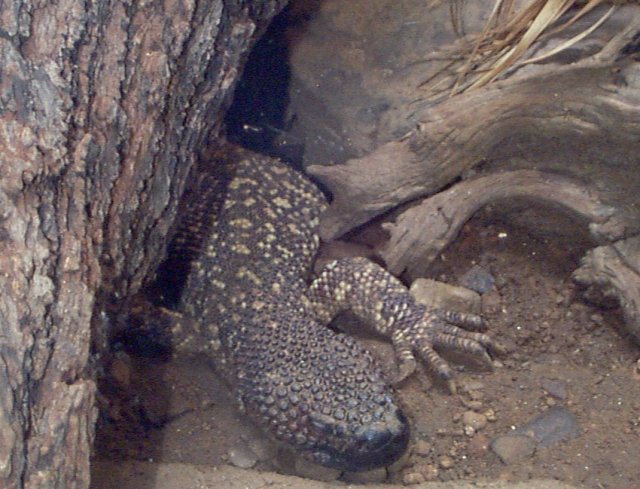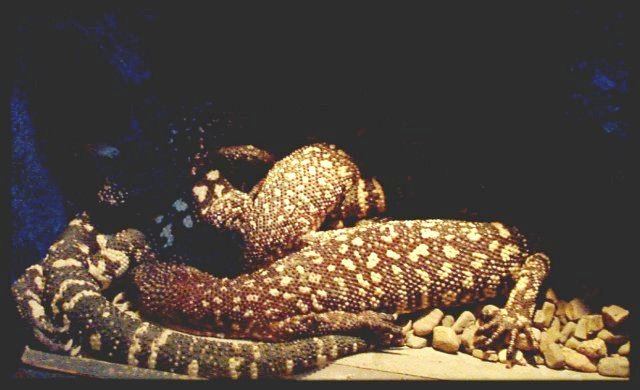Physical description:
The head is broad and slightly flattened, and
is joined with a short neck and an elongated, cylindrical body, ending
with a thick, rounded tail. The legs are short but powerful; each foot
has five clawed toes. The back is covered with large, bony scales. The
belly is in contrast, bears flat, regularly arranged scales that are hardly
ossified. The teeth curve slightly backward and are set somewhat inward
from the edge of the jaws. The lower jaw teeth have single grooves on the
front and back that permit the venom to flow into the wound.
|
Ecology
-
 Habitat Habitat
-
Found in dry,
open forest areas with abundant rocks and sparse vegetation. Burrows to
avoid the mid-day heat.
-
-
Niche
Carnivorous.
Eats insects, spiders, other small invertebrates, lizards, snakes, rodents,
birds and eggs. Primarily terrestrial. They are frequently found in abandoned
mammal burrows and near sources of permanent water. Preyed upon by large
mammals and birds of prey.
|
Life History
Mating
occurs mostly in the spring. 3-13 long eggs laid in mid-late summer buried
in sand at a depth of about 5 in. Incubation 117-130 days.
|
Special Adaptations
-
Paired salivary
glands produce a venom injected through a groove in the teeth that paralyzes
prey.
-
Must chew their
victim in order to inject poison.
-
The tail is used
to store energy for times when food is scarce.
-
Long claws for
digging.
|
